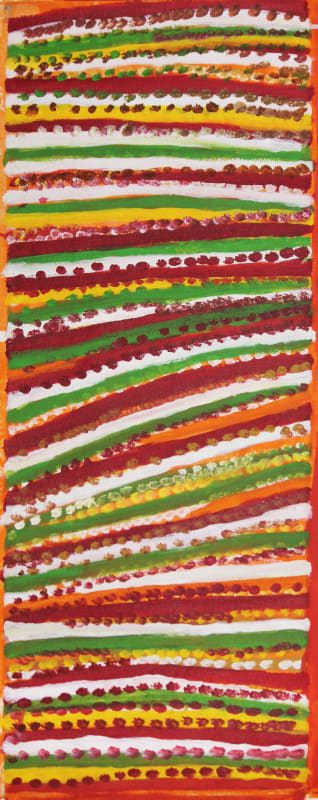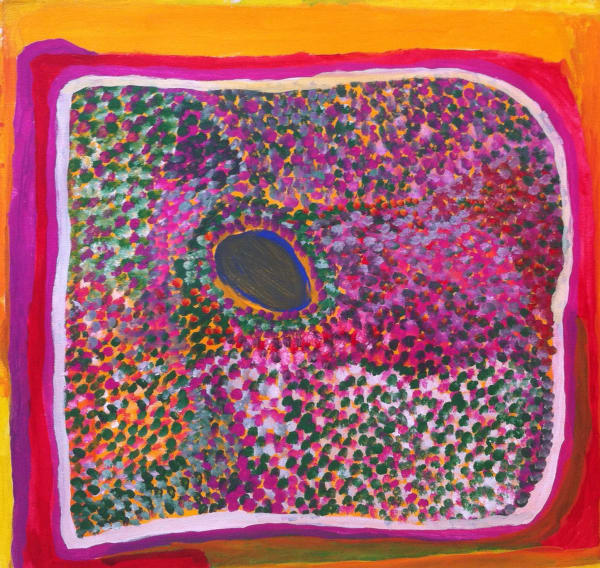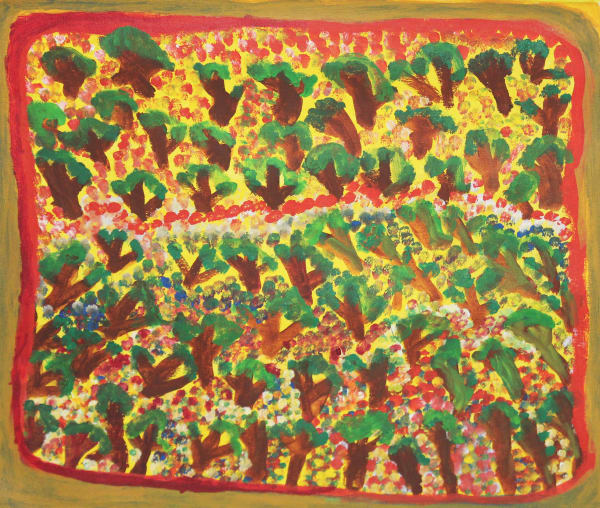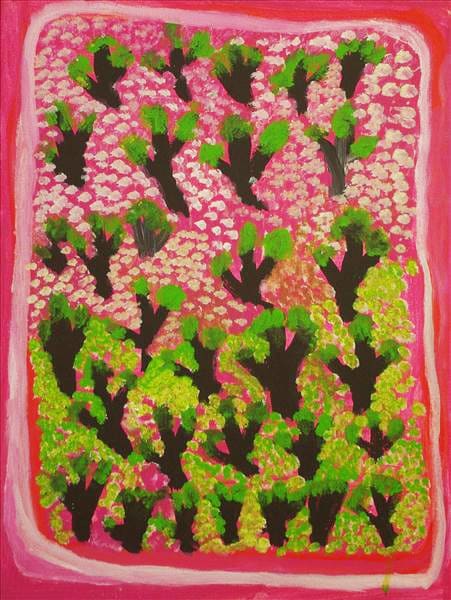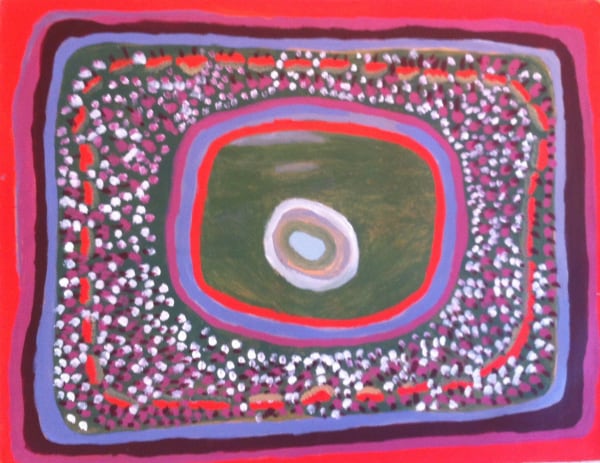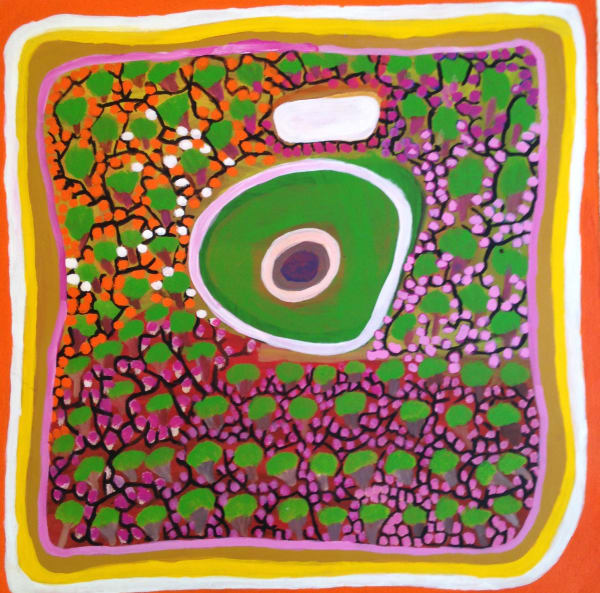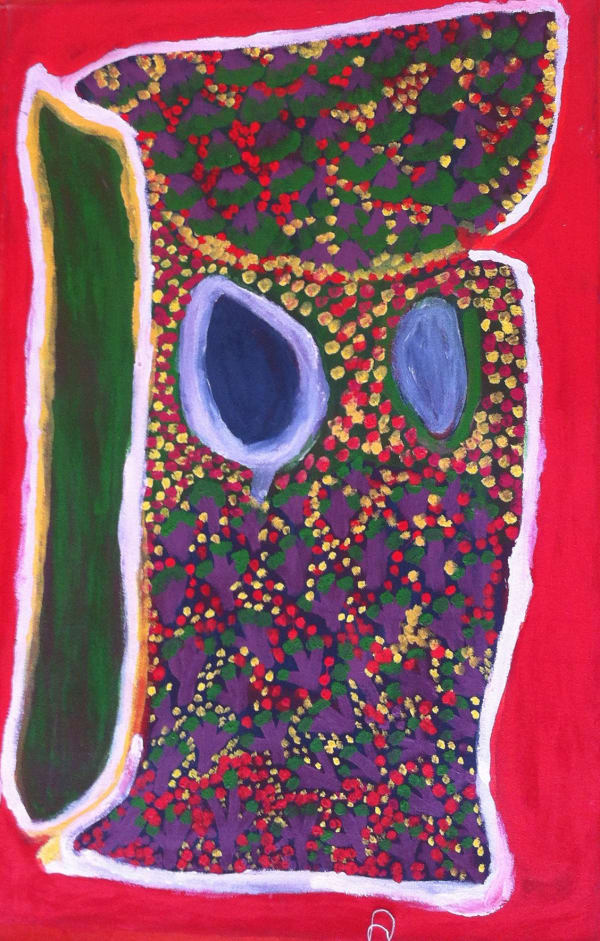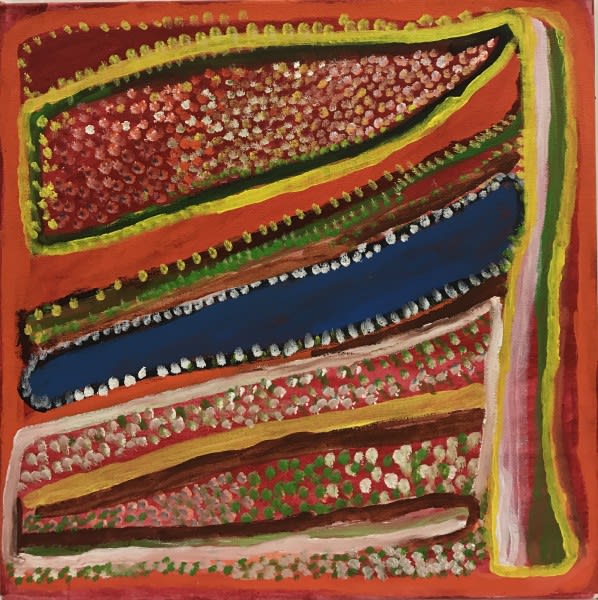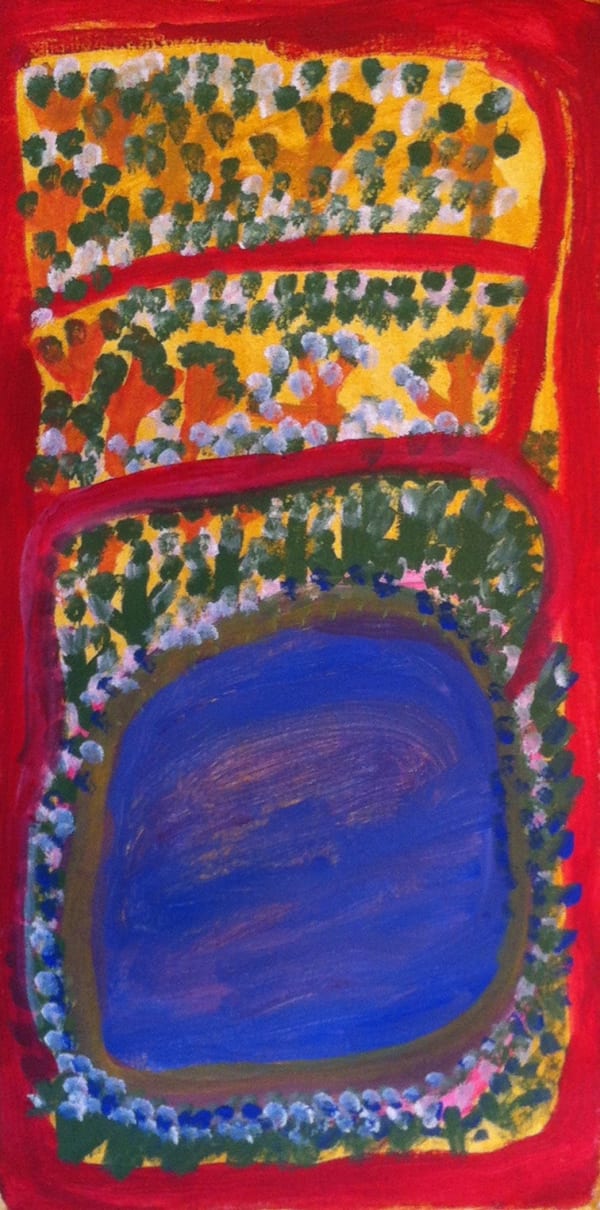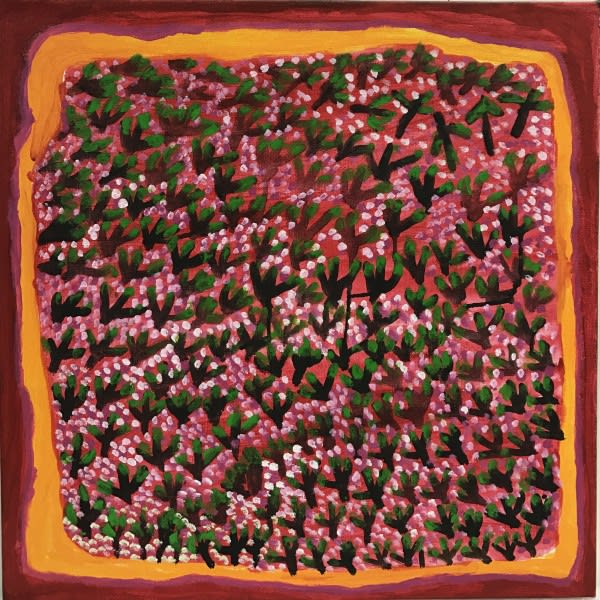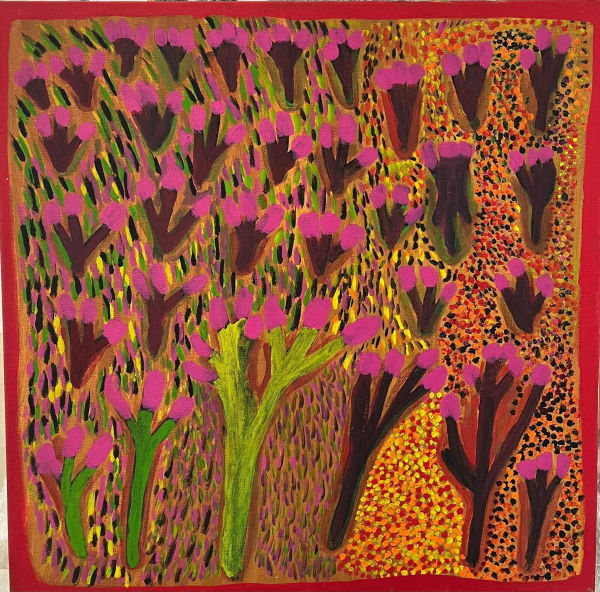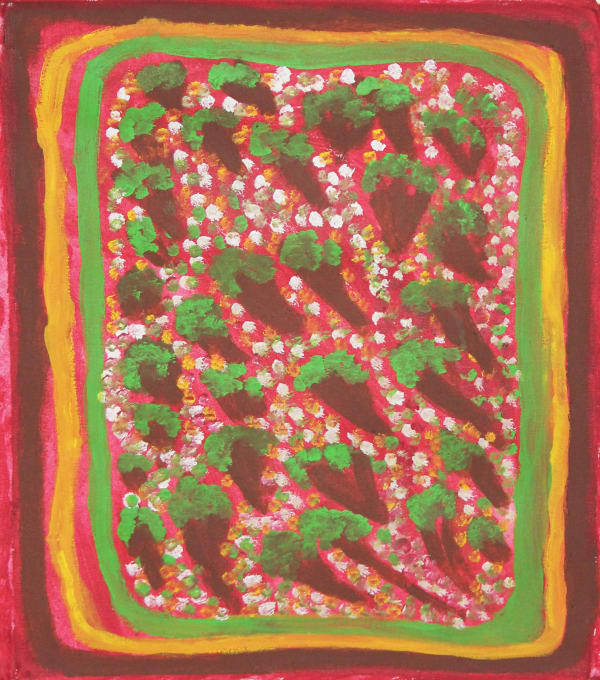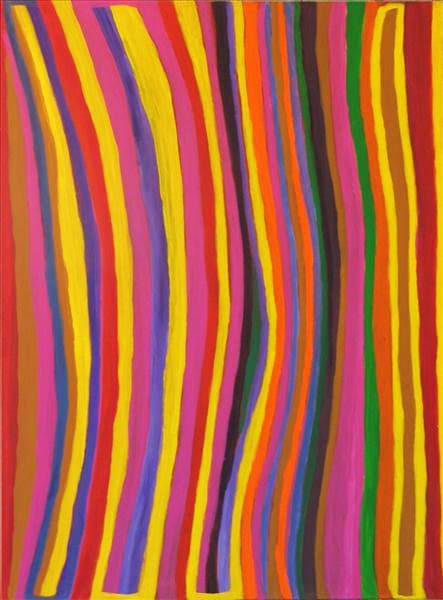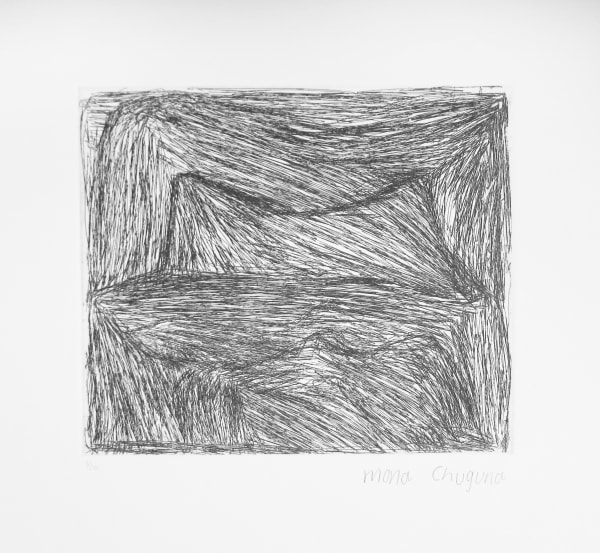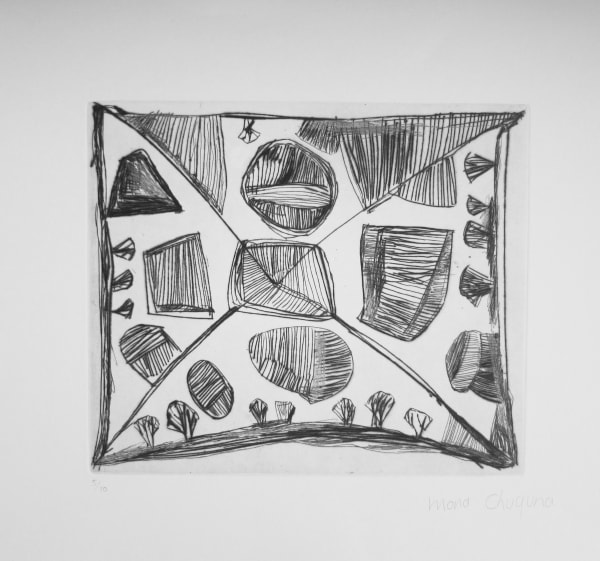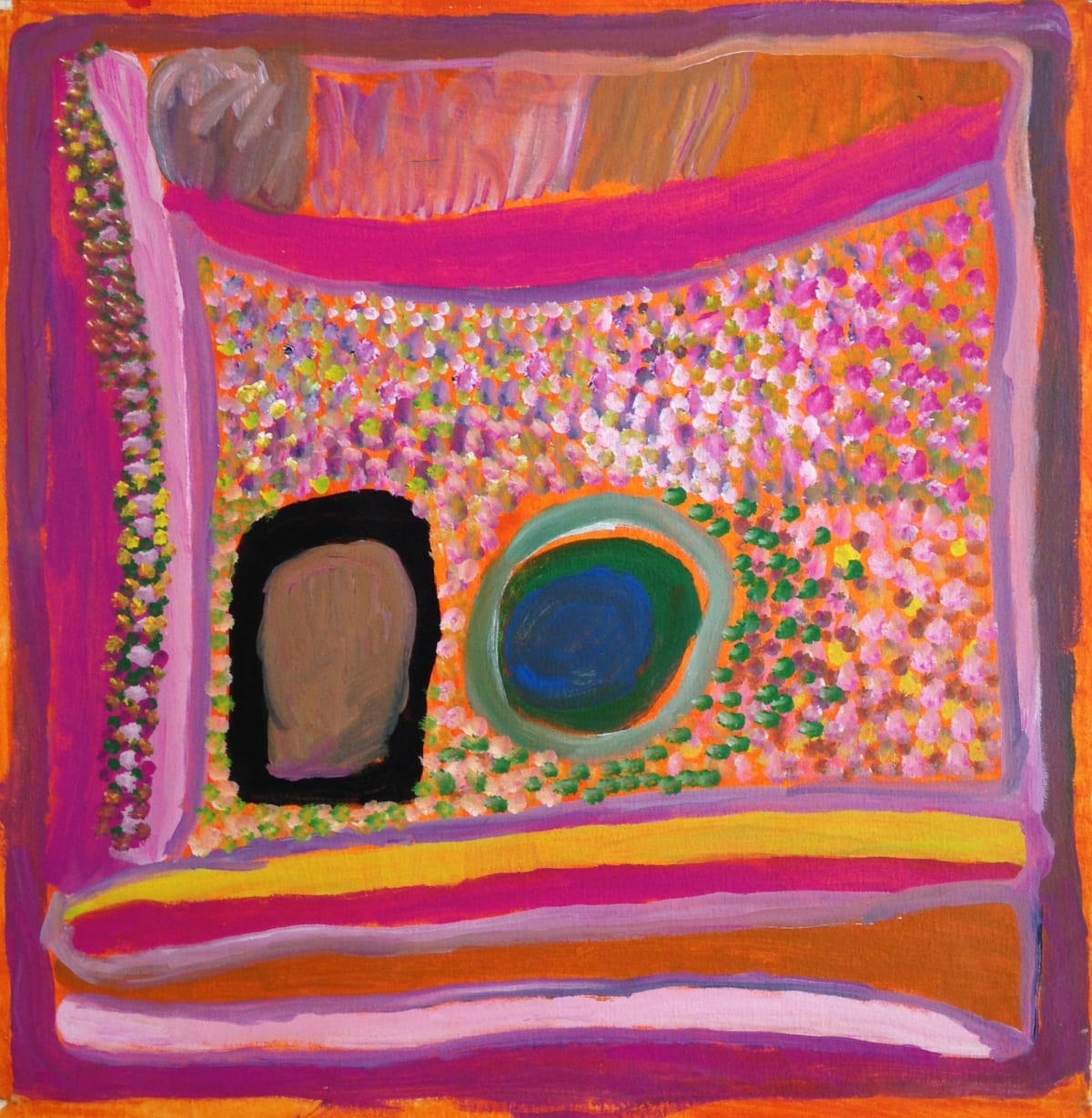Jukuna Mona Chuguna
Overview
A painter of the luscious desert, with a unique vision, Jukuna Mona Chuguna was one of the most important artists to emerge from the Aboriginal community at Fitzroy Crossing, in the Kimberley region of northern Western Australia, during the 1990s. Mona Chuguna was born at Kurntumangujarti, a remote desert community in the Great Sandy Desert in Western Australia, in the early 1930s.
The little town - set amidst abrupt scarps of red standstone - was formed around 1900, as the only place for hundreds of miles where the Fitzroy River was shallow enough to be crossed on horseback. The outpost now serves the region’s ranchers and miners, many of whom are of displaced Aboriginal descent. Despite the town’s struggles with poverty, a thriving community of indigenous artists emerged there in the late Twentieth Century, setting an enduring legacy that continues to this day.
Mona Chuguna and her husband, Kurrapa Peter Skipper, are widely recognised as two of the foremost painters from the Fitzroy Crossing community, alongside Daisy Andrews (c. 1934 - 2015), Nyuju Stumpy Brown (c. 1924 - 2011) and Janangoo Butcher Cherel (c. 1920 - 2009).
Chuguna’s distinctive approach to landscape painting offers a hybrid perspective, combining the predominantly aerial viewpoint of the Desert Painting tradition with elements frontal figuration. It is as if the artist’s homeland is captured by a bird flying over the waterholes, or perched at the foot of the abundant trees. Her work is enlivened by a bold - and joyful - use of colour: tomato-reds combine with lime greens and fluorescent pinks, to evoke the heat and humidity of the desert air, and the shimmering warmth of the terrain.
Speaking of her subject-matter, Chuguna has said: ‘My feeling for my Country comes from the stories. I paint my mother’s Country and father’s. It’s sad too because my father is buried there. I think about my Country all of the time. I like to paint the desert. It makes me think about my parents.’
Jukuna Mona Chuguna is an artist of international repute. Her work is held in museum collections in Australia, Europe and the US, including the National Gallery of Australia, Canberra, the National Gallery of Victoria, Melbourne, and the Museo Sa Bassa Blanca in Majorca, Spain.
Works
-
 Jumujarra- Two Waterholes, 2010
Jumujarra- Two Waterholes, 2010 -
 Wayampajarti, 2005
Wayampajarti, 2005 -
 Warntiripajarra, 2010
Warntiripajarra, 2010 -
 All The Flowers, 2004
All The Flowers, 2004 -
 Mututa, 2004
Mututa, 2004 -
 Kurrmalyi -Trees and Flowers, n.d
Kurrmalyi -Trees and Flowers, n.d -
 Yamparna, 2011
Yamparna, 2011 -
 Kuralkural Jila, 2008
Kuralkural Jila, 2008 -
 Kunajarti, 2011
Kunajarti, 2011 -
 Kuralkural Jila, 2006
Kuralkural Jila, 2006 -
 Koorali - Two Waterholes, 2009
Koorali - Two Waterholes, 2009 -
 Jilji, 2011
Jilji, 2011 -
 Jumu, 2011
Jumu, 2011 -
 Murtilyakura, 2011
Murtilyakura, 2011 -
 Kurrkunga, 2011
Kurrkunga, 2011 -
 Jilji and Partiri, 2010
Jilji and Partiri, 2010 -
 Jumu - Soak Water, 2007
Jumu - Soak Water, 2007 -
 Warrngarn, 2009
Warrngarn, 2009 -
 Turtujartiwarnti- Kurrmalyikurrmalyi, 2009
Turtujartiwarnti- Kurrmalyikurrmalyi, 2009 -
 Miljili, 2006
Miljili, 2006 -
 Kurlku - Bush, n.d.
Kurlku - Bush, n.d. -
 Jitpari and Wirrikari, n.d.
Jitpari and Wirrikari, n.d. -
 Koorali - One Waterhole, 2009
Koorali - One Waterhole, 2009 -
 Untitled, 2006
Untitled, 2006 -
 Untitled, 1997
Untitled, 1997 -
 Untitled, 1996
Untitled, 1996 -
 Untitled, 1996
Untitled, 1996
Exhibitions
Related Content
